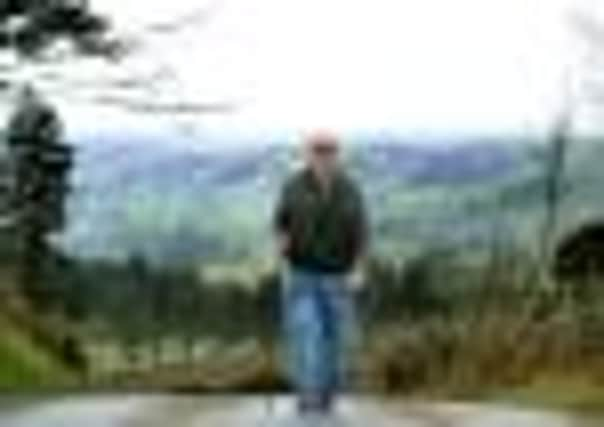When the modern world dawned for the farming life of the Dales


The period from the war to the early Sixties embraced more changes to rural life and farming methods than any other before or since. And I was there to experience it.
I was born on a farm in Nidderdale in 1941, but the story really starts in 1946 and my two years at Darley School followed by four years at Dacre Braithwaite.
Advertisement
Hide AdAdvertisement
Hide AdMy main subjects during five years at Harrogate Grammar school were sport and girls. With a handful of O-levels, a decision had to be made to stay on for A-levels, or escape the discipline for the hard work but greater freedom of the farm. The farm won.
Here I found a way of life largely unchanged from a century or two earlier. Cart horses were used and cows were hand-milked, whilst one or two pigs were fattened and killed each year for home consumption.
Despite the poor soil and climate, corn and roots were traditionally grown, not just as a spin-off from the war effort. Lambing time, haymaking and harvesting were the principal tasks, with threshing days being eagerly awaited, particularly as it meant a day off school.
It was a world peopled by rare characters such as Harry the “mowdy” (mole) catcher who also helped with haymaking on the farm. One very hot day he removed successive items of clothing until he was wearing only his long johns.
Advertisement
Hide AdAdvertisement
Hide AdThese characters sometimes gave rise to comical stories without even trying. A favourite concerned two binder men (corn harvesters) from Darley who set off to reap a field for granddad.
On the way they had to cut a field for someone else, and it being a warm day they drank liberal amounts of cider from their cans. By the time they had finished, they were half cut themselves, so much so that they turned into the wrong field and cut that one instead of grandad’s.
Fortunately, he was in Pateley Bridge for the day, or there might have been serious consequences.
Haymaking still involved loose hay which was turned and dried, raked into rows, sammed (swept) into heaps, and then forked into conical pikes (hay cocks). These were then led on carts or pike bogeys to the barns or large ricks, though for shorter journeys they were snigged (dragged) along the ground.
Advertisement
Hide AdAdvertisement
Hide AdAll those summer days seemed sunny to a child, and I can still hear the crackle of the hay and smell the scents, even the horse droppings. It was a world of hard work alongside nature. It was also a world that was about to change.
The first tractor arrived in 1949, the familiar grey Ferguson, and I was soon allowed to take the wheel for simple tasks. It was thrilling: Not so for the horses, one of which went to the knacker’s yard, though the other was able to spend several years in honourable retirement on the farm.
About the same time the milking machine was installed, a terrific boost, and eventually electricity in 1957, and later still, in 1961, mains water. The farm had entered the modern age. Even baled hay was becoming the norm.
At a time when farm holidays were almost unknown, entertainment tended to be home-based. The regular source for many years was the wireless which stood in the corner and opened the way to unseen heroes.
Advertisement
Hide AdAdvertisement
Hide AdFrom Donald Peers and Wilfred Pickles to the Goons and Al Reed, then on through a plethora of sports stars, in particular cricketers. Cricket was popular in the dales immediately post war, and Hutton, Wardle, Trueman and company were eagerly followed, while the older hands recalled Bradman, Verity and Sutcliffe, who was born in Summerbridge.
Much of the evening entertainment would be based on the many chapels scattered throughout the dale with their regular services and functions such as anniversaries and harvest festivals. Even for the non- religious the chapel was an important centre.
Most popular were the annual chapel outings, to the seaside in summer, to the pantomime in winter. I remember seeing Norman Evans at the Alhambra. Farming groups also had their traditional outings to places with an agricultural theme. There were also whist drives nearly every night for the addicts, sometimes with a dance to follow, particularly at the weekends.
This was where the young learned to dance before they graduated to the full blown hops such as Darley on a Saturday night.
Advertisement
Hide AdAdvertisement
Hide AdBest of all were the pictures at Pateley cinema, three each week, with Westerns the preferred option for country folk. As we acquired our own transport we could go to any we fancied, and transport could be anything. Lads had pushbikes, young men had motor bikes, and there were vans and cars of various degrees of roadworthiness, or public transport in the form of the familiar red West Yorkshires.
Alas, though, there would soon be no trains as the service closed in the early Fifties for passengers, and in the early Sixties for goods. That last train down the dale coincided with the rising waters of Thruscross reservoir, which drowned the remnants of the West End community.
The last train as Michael saw it
“It moved further down the valley, its progress marked by a plume of smoke which for years had enabled farmers to set their watches. The hooter shrilled as the train approached a crossing. Somehow it seemed to signal the death of a way of life, and the end of an era. Too late, those who had known that era would realise that something very special had gone forever.” – From The Glimmering Landscape by Michael Iveson, Pen Press, £7.99.